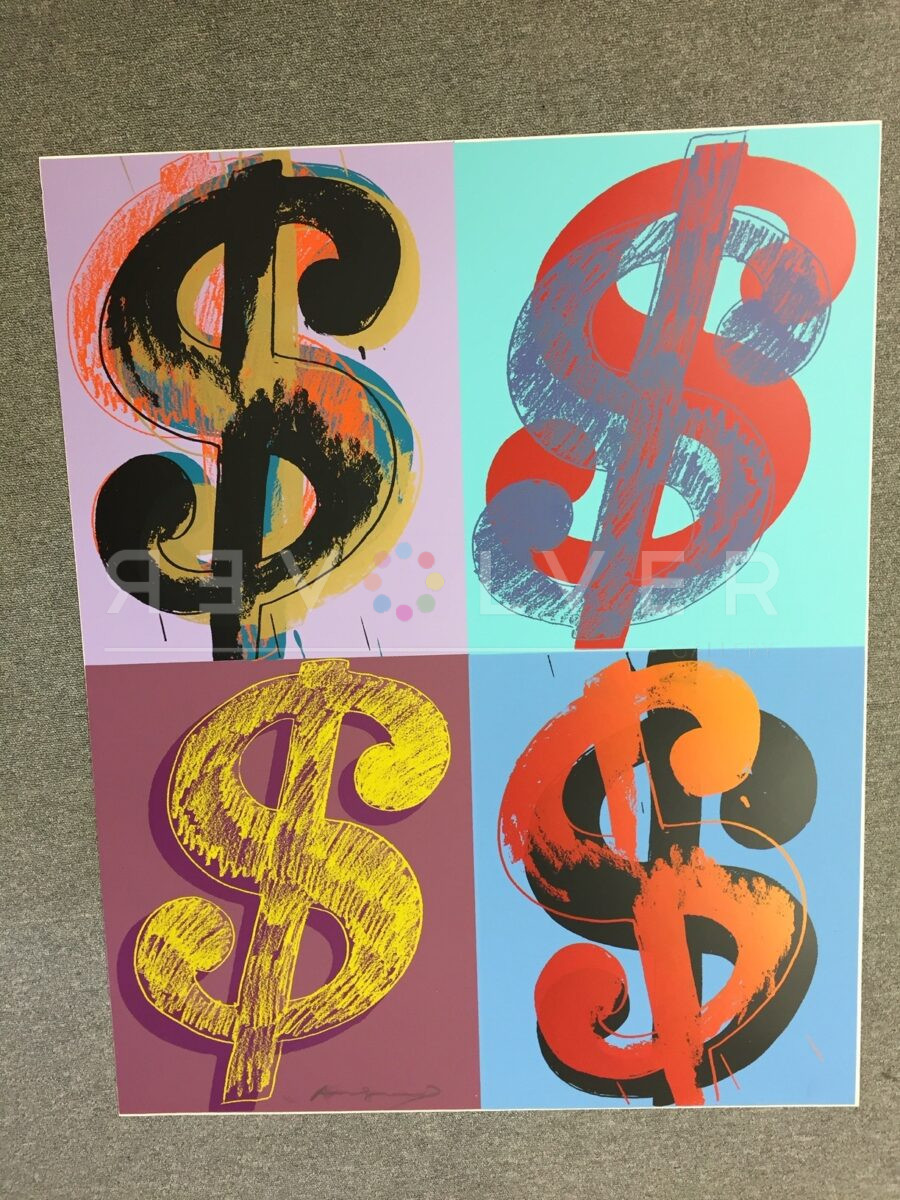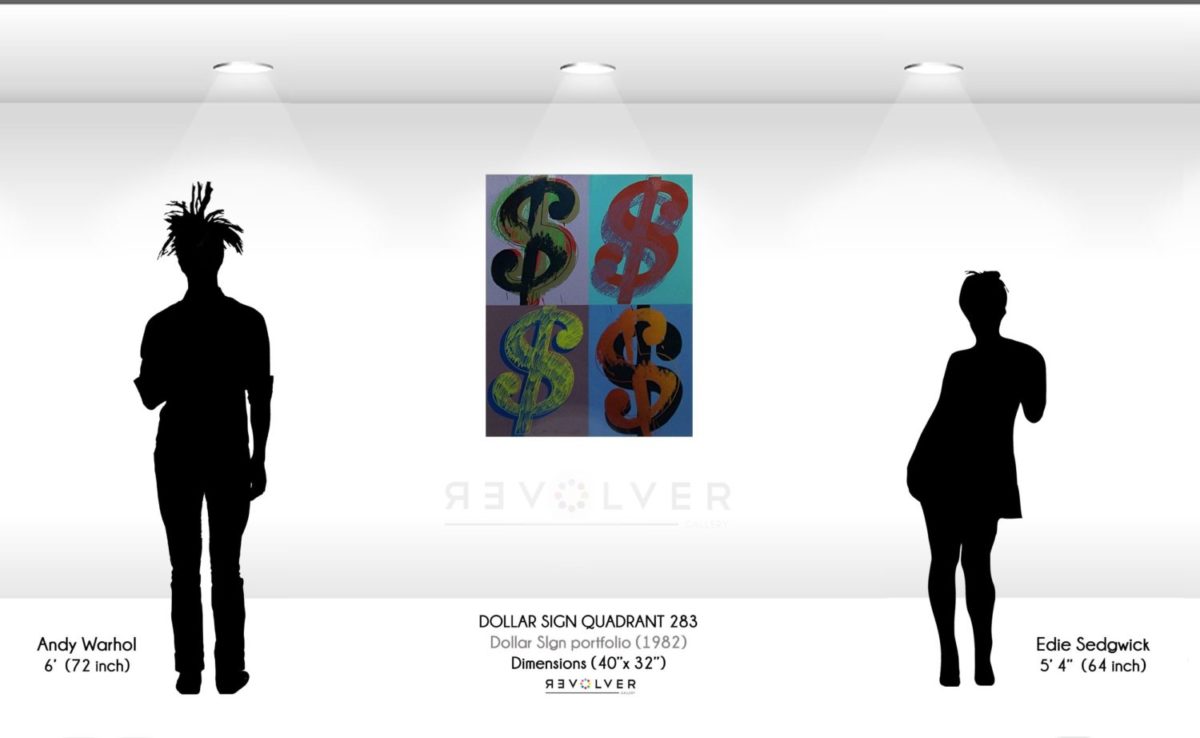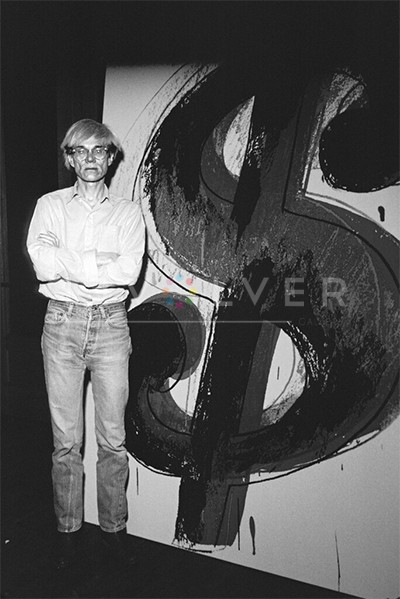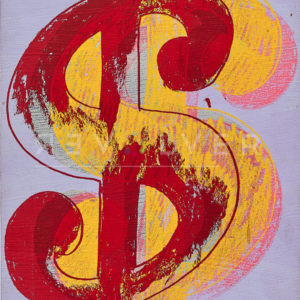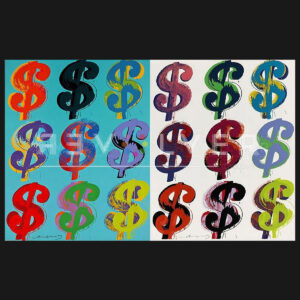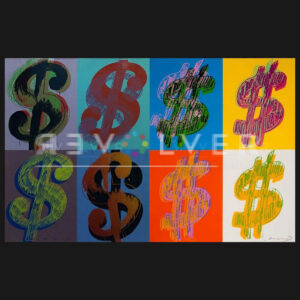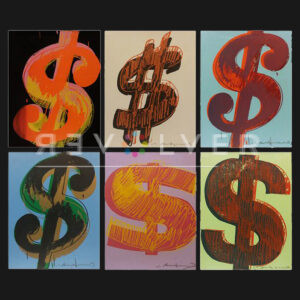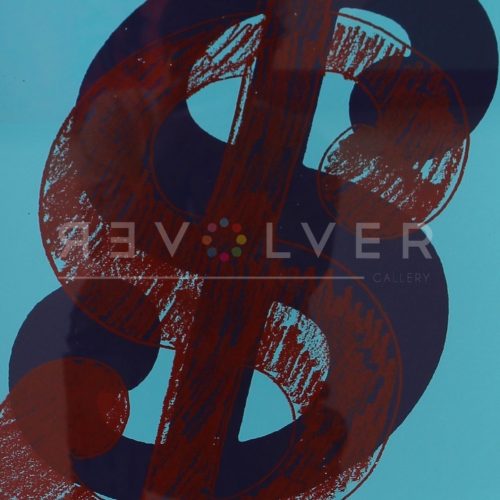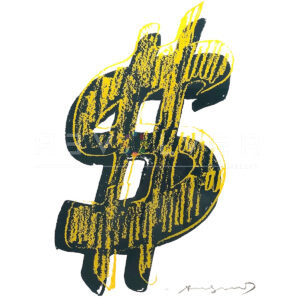Dollar Sign (Quadrant) 283 stands out in Andy Warhol’s famous Dollar Sign (Quadrant) collection from 1982. The difference being the moodier colors, askew compositions, and more formal symbol of wealth. The varying textures and hand drawn lines allude to the comic strips which Warhol and other pop artists, like Roy Lichtenstein, drew inspiration from. Both artists were fascinated by the allure of money, and understood the power it held over the production of art. The Dollar Sign portfolios came at an appropriate time for Warhol. In the 1980s, he saw a re-emergence of financial and critical success.
Growing up, Warhol’s Byzantine Catholic and Solvakian backgrounds influenced him heavily. Yet, his interests went beyond his community. He contracted the rare neurological disorder known as Sydenham Chorea, or St. Vitus dance, which caused involuntary movements. Consequently, he spent much of his time reading hollywood magazines and comic books while bedridden. His working class family noticed his artistic inclinations, and planned to use their savings to send Andy to the Carnegie Institute of Technology (now called Carnegie Mellon). His art degree in pictorial design would help him become one of the most talented commercial artists of the 1950s.
Business and art remained in tandem for the entirety of Warhol’s life. For him, acquiring wealth was as much an art form as making art itself. Creating a business was not merely a natural extension of producing art, but rather, Warhol would say “business art is the step that comes after Art”. That being said, his interest in making art a business was deliberate. The Dollar Sign (Quadrant) series and similar works borrow the same glamour as the Marilyn prints, and the same commodified simplicity as the Campbell’s Soup Can. However, the allure of those subjects remain abstracted from themselves, while in Dollar Sign, objectified cultural capital is on full display.
Money can buy glamour, but wearing a nice suit wasn’t enough for Warhol. Instead, one had to “Think rich. Look poor”. There is nothing more absolute than the flow of money through the art world, yet it comes at a cost. The cost being how the price of a piece has the capacity to alter the purpose of its creation. However, Dollar Sign (Quadrant) 283 settles the money dilemma by wasting no time, by making money the point.
The repertoire of repetitions in Warhol’s oeuvre suggests his love for the simple products of mass-production. It also suggests that the persistence of images in our society needed a pop-art revaluation. There are plenty of Bald Eagles, Trucks, and Mickey Mouses to see, in their myriad forms; but Warhol makes them into something aesthetically immaculate through repetition and change. The Dollar Sign series has become a testament to the success Warhol achieved in his lifetime, and is as iconic as any of his most famous works.
Photo credit: Andy Warhol with Dollar Sign painting, New York, 1982. Image: © Santi Visalli, Artwork: © 2022 The Andy Warhol Foundation for the Visual Arts, Inc. / Licensed by DACS, London

